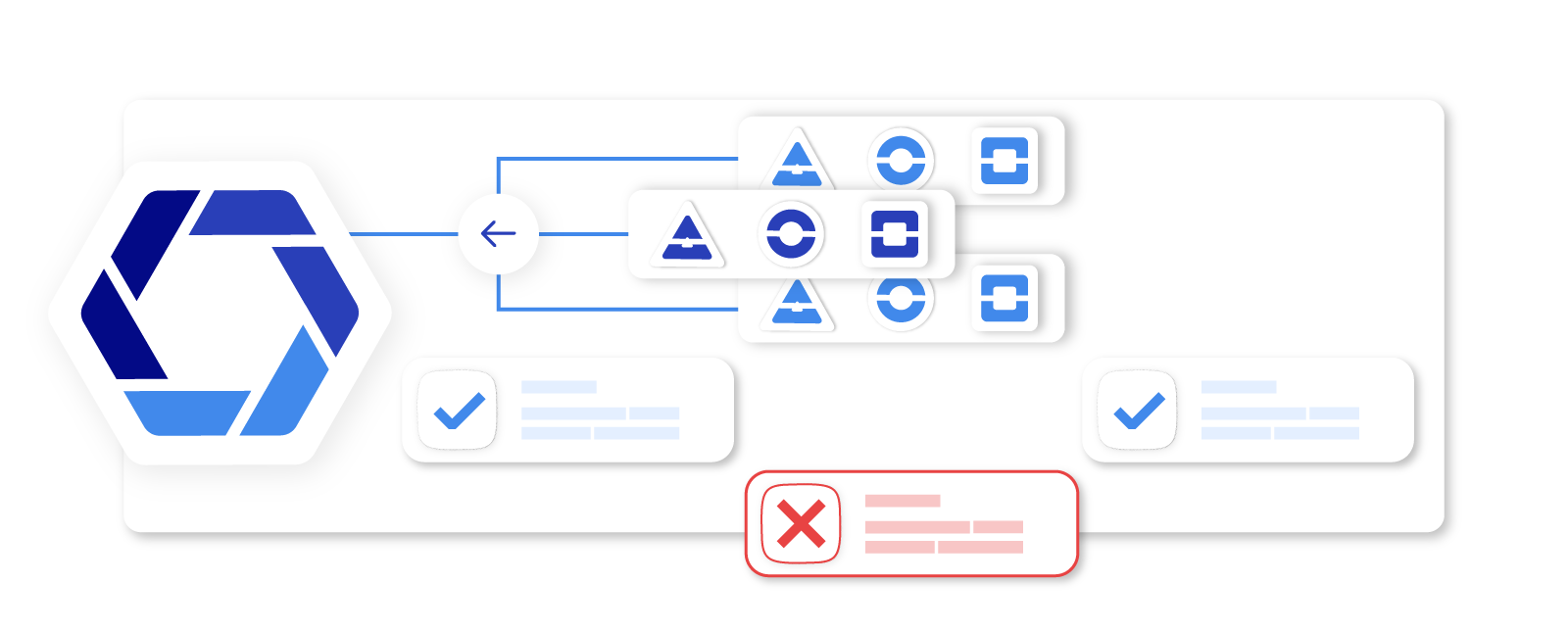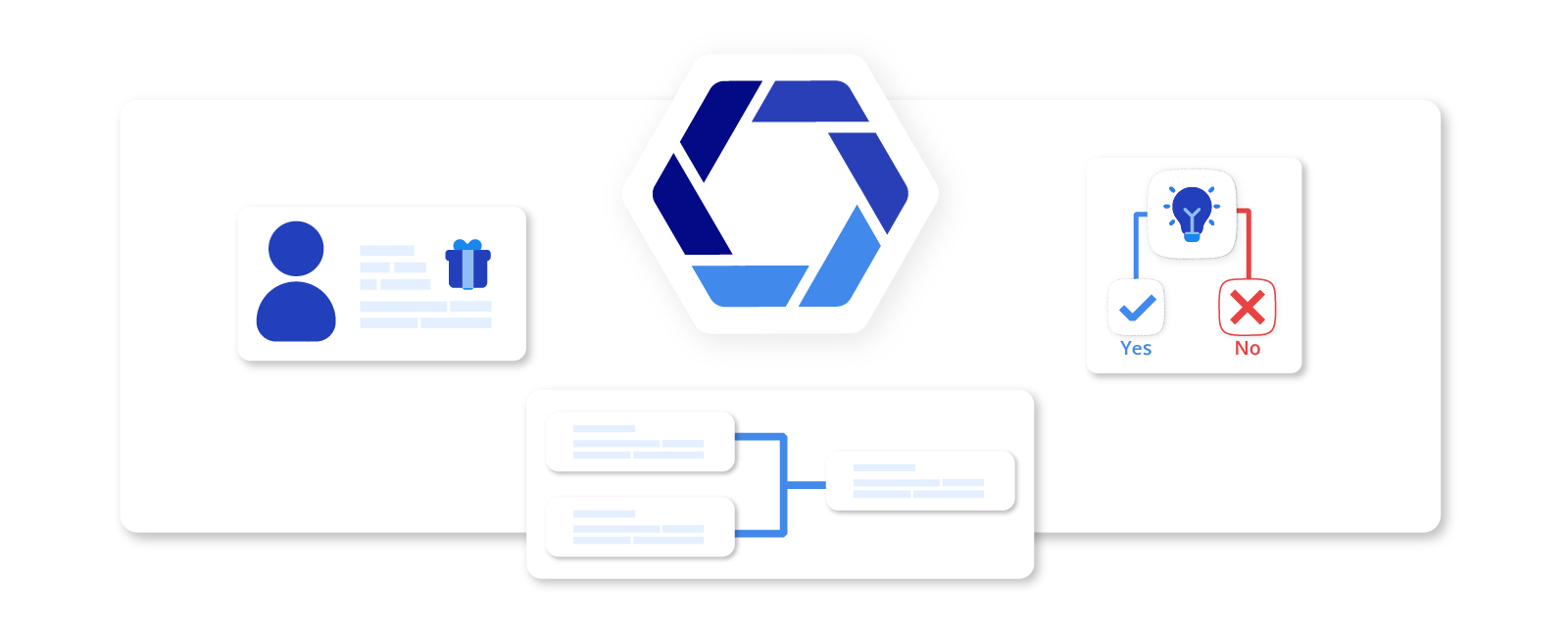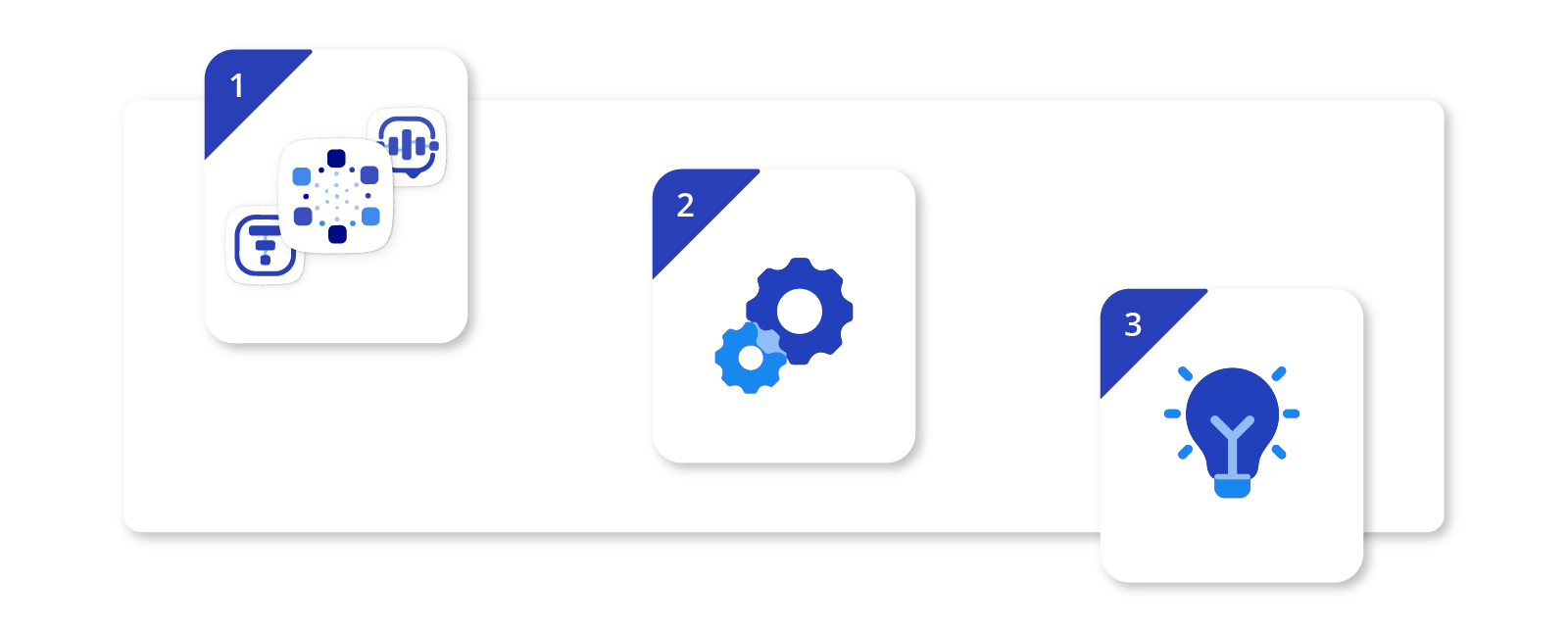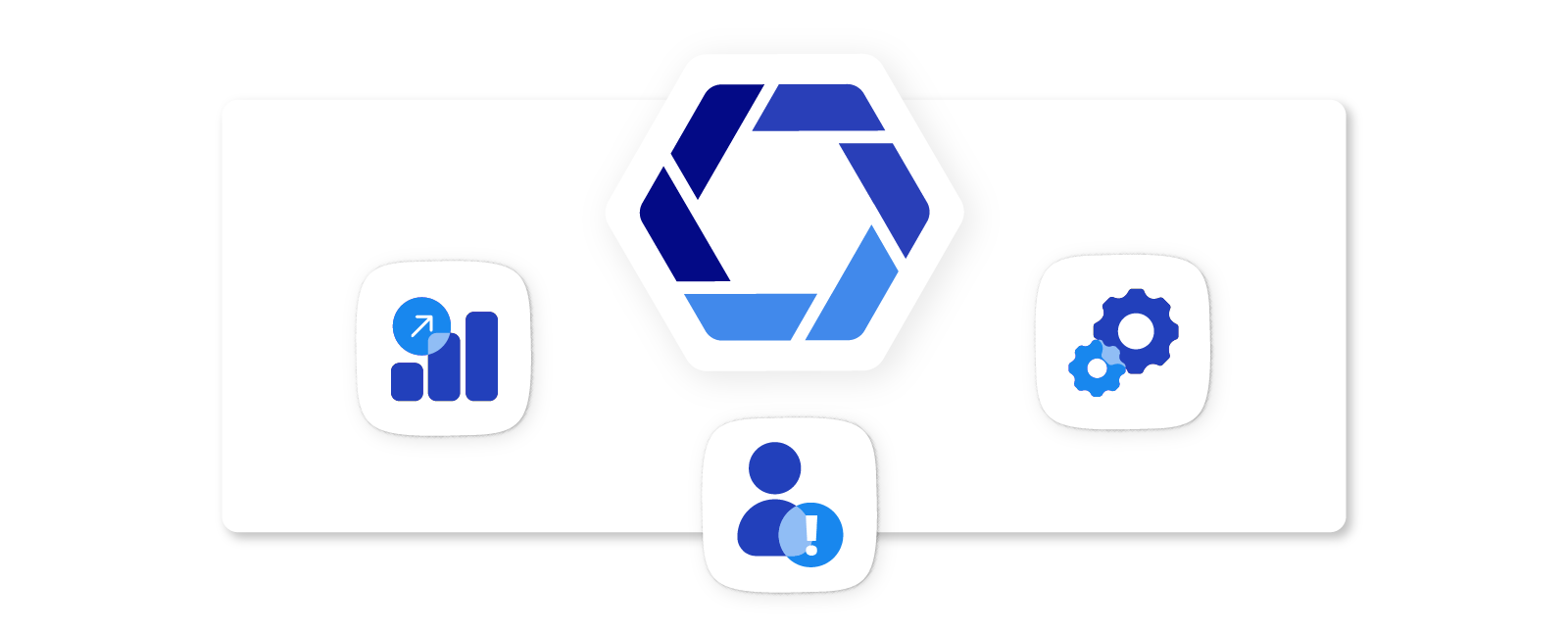As we stand on the precipice of the Fourth Industrial Revolution, AI is no longer a distant concept confined to the realm of science fiction, but a transformative force reshaping industries across the globe.
This wave of AI-driven change is particularly prominent in the business world, influencing everything, from operations and decision-making to customer service and product development.
For today’s executives, understanding and leveraging AI is no longer optional—it’s essential. As stewards of strategic direction and decision-making, executives must not only familiarize themselves with the nuances of AI but also harness its potential to drive innovation, efficiency, and competitive advantage.
In this context, the role of AI extends beyond mere technology to becoming a key strategic enabler that can dictate the future trajectory of businesses.
This comprehensive guide aims to demystify AI for executives and business leaders. It seeks to clearly explain AI, its implications, and its strategic importance.
The following sections will explore various facets of AI in business, including its application in different industries, ethical considerations, AI training opportunities for executives, and AI executive assistants. We will also delve into reputable resources and practical examples of companies that have successfully embraced AI.
By the end of this article, you will have a solid foundation in AI’s role in the business realm to make informed decisions and chart a course for your organization in an increasingly AI-driven world. So let’s dive into the transformative world of AI for executives and business leaders.
Understanding the Basics of AI
Before delving into the intricacies of AI and its potential benefits, it’s crucial to grasp its foundational concepts, from its basic definition to the distinct but interconnected fields of machine learning and deep learning.
What Is AI and How Does it Work?
Artificial intelligence is a branch of computer science dedicated to creating systems that can perform tasks that typically require human intelligence, such as decision-making, speech recognition, visual perception, and language translation.
It is generally divided into two types: narrow AI, designed to perform a single task like voice recognition, and general AI, which theoretically can perform any task a human can.
A key subset of AI is machine learning (ML), which involves developing computer algorithms that can learn and improve from experience. It enables a system to make decisions or predictions based on data without explicit programming.
ML has three primary types: supervised learning, where the model learns from labeled data; unsupervised learning, where the model identifies patterns in unlabeled data; and reinforcement learning, where the model learns to make decisions by interacting with its environment.
Deep learning is a further subset of ML, which employs artificial neural networks with multiple layers—hence “deep”—to model and understand complex patterns in datasets. These networks consist of layers of nodes that mimic the neurons in the human brain, which is why they are often referred to as artificial neural networks.
Each layer of neurons processes attributes of the input data and passes on the result to the next layer. This structure allows deep learning models to learn and represent the data intricately, tackling complex tasks like image and speech recognition.
How Does AI Process Information and Learn from Data?
AI, particularly ML models, processes information and learns from data through iterative processes. In a supervised learning scenario, for example, an AI model is trained using a labeled dataset where the “correct answers” are already known.
During training, the model makes predictions based on the input data provided. These predictions are compared to the actual labels, and the difference (error) is measured. The model uses this error to adjust its internal parameters to reduce the error in future predictions.
This process is repeated many times, with the model gradually improving its ability to make accurate predictions. Once the model’s performance reaches a satisfactory level, it can then be used to make predictions on new, unseen data.
This learning process is more complex in deep learning because of the multiple layers in the neural networks. Each layer progressively learns more abstract representations of the input data, allowing it to handle complex tasks.
Essentially, through machine learning and deep learning, AI systems can learn from data, improve over time, and make informed decisions or predictions, even about situations they haven’t encountered before.
What’s the Difference between AI and Traditional Software?
Traditional software and AI are fundamentally different in terms of their design, functionality, and capabilities.
Traditional software operates based on a predetermined set of rules and instructions provided by programmers. It can’t deviate from these instructions, meaning it can only perform tasks it was explicitly programmed to do.
Traditional software doesn’t learn from experience or adapt to new inputs; it follows the same procedures every time it’s run, producing consistent and predictable results. It requires manual intervention for upgrades or changes in functionality.
AI, on the other hand, is designed to learn and adapt over time. Using machine learning and deep learning, AI systems can learn from data, identify patterns, make decisions, and improve their performance without being explicitly programmed to do so.
They can handle uncertainty and variability, meaning they can function effectively even when the input data changes or is incomplete. They can also process vast amounts of data faster and more accurately than traditional software or humans.
Moreover, AI can solve complex problems beyond the capabilities of traditional software. Tasks such as speech recognition, image processing, natural language understanding, and autonomous navigation, which are difficult or impossible for traditional software, can be effectively handled by AI.
Thus, while traditional software is rule-based and static, AI is data-driven and dynamic, able to learn, adapt, and improve over time.
Is AI Something to Be Afraid Of?
The introduction of breakthrough technologies has always been accompanied by a degree of trepidation and controversy, and AI is no exception.
Concerns often revolve around its potential misuse, job displacement due to automation, and even the philosophical question of machine consciousness. While these concerns are not without merit, it’s essential to balance them with AI’s considerable benefits.
AI has significantly more capacity to help than to harm. For instance, it has been used in healthcare to improve patient outcomes by predicting diseases earlier and more accurately and creating personalized treatment plans, as well as assist in complex surgeries.
AI has also revolutionized how we diagnose diseases, with machine learning models capable of detecting anomalies in medical images, often with equal or greater accuracy than human doctors.
In environmental science, AI is helping us combat climate change by optimizing energy usage in buildings, predicting weather patterns, and even monitoring deforestation in real-time. In agriculture, AI technologies are used to optimize planting schedules, monitor crop health, and maximize yield, all of which contribute to more sustainable food production.
AI also promises to revolutionize how we work and do business. It can automate mundane and repetitive tasks, freeing up humans to engage in more creative and high-value work. Despite the fears of job displacement, many experts believe that AI will create new jobs that we can’t even imagine today, much like what happened during the Industrial Revolution.
Of course, like any powerful technology, AI must be regulated to prevent misuse and mitigate potential negative impacts. This includes creating laws and ethical guidelines around the use of AI and investing in education and retraining for workers in industries likely to be affected by it.
So while it’s natural to have concerns about AI, it’s important to remember that it’s a tool. If used responsibly, AI has the potential to greatly improve our lives and solve some of the most pressing problems we face.
Fear should not prevent us from harnessing its positive potential. Instead, it should drive us to navigate its challenges with foresight, responsibility, and thoughtful governance.
The Impact of AI on Business
AI is reshaping industries across the board, revolutionizing traditional business operations and delivering improved efficiency, accuracy, and predictive capabilities. Businesses are leveraging it to streamline processes, make informed decisions, and provide personalized customer experiences, unlocking competitive advantages and driving growth.
In healthcare, AI applications like predictive analytics are assisting in early disease detection and personalized treatment planning. For instance, Zebra Medical Vision, an AI healthcare startup, uses ML algorithms to predict a patient’s risk of diseases like breast cancer and cardiovascular illness, significantly improving patient outcomes.
In the retail sector, companies are using AI to personalize the shopping experience. Amazon, for instance, uses ML algorithms to offer personalized product recommendations, contributing to improved customer engagement and increased sales. Similarly, AI-powered chatbots are providing round-the-clock customer support, handling inquiries with high efficiency and precision.
The finance industry has seen significant AI integration, with algorithms performing fraud detection, risk assessment, and customer segmentation. Companies like American Express use AI to detect unusual spending patterns and flag potentially fraudulent transactions in real time, minimizing losses and ensuring customer trust.
AI is also transforming the manufacturing sector, where it is being used to predict equipment failures and schedule maintenance, resulting in increased uptime and productivity. Companies like Siemens use AI to monitor machinery in real time and anticipate failures before they occur, substantially reducing downtime.
Beyond operational efficiency, AI provides businesses with invaluable predictive capabilities. By analyzing historical and real-time data, it can anticipate market trends, customer behaviors, and potential business risks, empowering companies to make proactive, data-driven decisions.
Businesses embracing AI are experiencing improved operations and significant growth, which demonstrates that it is not just the technology of the future but a critical driver of success in the present.
Case Studies of AI in Business
Several companies across different industries have successfully integrated AI into their operations and achieved significant results. Their experiences offer valuable lessons for other businesses considering AI implementation.
Netflix
The streaming giant uses AI to personalize movie and show recommendations for its millions of subscribers. The AI algorithm analyzes viewing habits, ratings, and preferences to suggest content users might enjoy.
This strategy keeps users engaged and reduces churn, contributing to Netflix’s dominant position in the streaming market. Hence, AI can significantly enhance customer experience and engagement through personalization, so companies should consider how it can help tailor their services or products to individual customer preferences.
Starbucks
The coffee chain uses AI to provide personalized ordering suggestions. Their AI system, Deep Brew, analyzes order history, time of day, weather, and location to recommend products to customers.
Starbucks’ success with AI shows how businesses can use it to understand their customers better and make their services more convenient and personalized.
American Express
The financial corporation uses AI to detect fraudulent transactions. By analyzing patterns in transaction data, their AI system can identify unusual behavior and flag potential fraud, reducing losses and protecting customers.
This case study demonstrates the value of AI in risk management and security. It shows how businesses can use AI to safeguard operations and enhance customer trust.
The tech giant uses AI in various ways, from improving search results to powering its voice assistant, Google Assistant. Google’s DeepMind developed an AI called AlphaGo, which defeated the world champion in Go, a game known for its complexity.
Google’s extensive use of AI underscores its transformative potential across multiple facets of a business. AI is versatile and can be used to enhance different areas of a company.
These case studies highlight the successful integration of AI in varied industries, demonstrating its versatility and potential. They can serve as a guide for businesses considering AI integration.
The experiences of these companies highlight the importance of a strategic approach to AI, one that aligns with the company’s broader goals and considers the needs and preferences of the customers.
The Role of AI for Business Leaders
In this rapidly evolving digital age, AI knowledge has become strategically important for executives and business leaders, being the decision-makers of their organizations. Understanding its potential and applications can give them a competitive edge and help them steer their companies toward sustainable growth and success.
Firstly, AI provides valuable insights into market trends, consumer behavior, and operational efficiencies that can significantly inform strategic decisions.
By using AI-powered data analysis, leaders can better understand their business environment, identify opportunities and threats, and make data-driven decisions. For instance, predictive analytics can forecast customer trends and help executives strategize marketing efforts, product development, or service offerings.
Secondly, AI can automate routine tasks to free up leaders’ time to focus on strategic thinking and decision-making. For example, AI-powered tools can handle data aggregation and analysis and provide leaders with distilled information and insights rather than raw data.
Thirdly, understanding AI is critical for risk management. As AI becomes more integrated into business operations, leaders must understand potential risks, such as security breaches or data privacy issues, and how to mitigate them. This understanding allows for more informed decision-making regarding the implementation and management of AI systems.
Moreover, executives with a firm grasp of AI are better positioned to identify areas within their organization where AI can drive value.
Whether it is improving customer service through AI-powered chatbots, enhancing product quality through AI-driven quality control, or optimizing logistics through AI-enabled supply chain management, knowledgeable leaders can champion AI initiatives that align with the company’s strategic goals.
Finally, a cultural shift that embraces change and innovation is required for businesses to successfully adopt and integrate AI. Executives play a pivotal role in driving this cultural shift, and their understanding of and commitment to AI can significantly impact the employees’ acceptance of AI.
Ethical Considerations and Challenges in AI Implementation
While AI has significant benefits, it also introduces ethical considerations and potential challenges businesses must navigate.
One of the primary ethical issues is data privacy. AI systems often rely on large amounts of data, which include sensitive personal information.
Businesses must ensure they have stringent measures to protect and use this data responsibly. They must adhere to data protection regulations and uphold their ethical obligation to respect individual privacy rights.
Bias is another ethical concern in AI. If the data used to train AI algorithms contain inherent biases, the AI system can also be biased. This can lead to unfair outcomes, especially in sensitive applications like hiring or lending.
Businesses must ensure they use diverse and representative data sets to train their AI and test their systems rigorously for potential bias.
AI also presents the risk of job displacement due to automation. While it can increase efficiency, it can also render some jobs obsolete. Businesses must consider the potential impact on their workforce and explore options like retraining and upskilling to help employees adapt.
Transparency is another challenge. AI systems, particularly those based on deep learning, are often referred to as “black boxes” because their decision-making processes are not easily understandable by humans.
This lack of transparency can create trust issues, especially in critical areas like healthcare or finance. Businesses must strive for “explainable AI,” systems where the decision-making processes are transparent and understandable.
Lastly, there’s the challenge of maintaining control over AI systems, especially as they become more complex and capable. Businesses must ensure that safeguards are in place to prevent unintended consequences and that there’s always a human in the loop to override AI decisions when necessary.
AI Education for Executives
In the context of rapid technological evolution, AI courses for executives are no longer just an advantage but a necessity. As leaders of their organizations, executives need to stay ahead of the curve to leverage AI’s potential effectively and ethically.
The importance and benefits of AI courses for executives are manifold. Firstly, such courses provide a foundational understanding of AI, its various applications, and its potential impact on businesses. This knowledge helps executives make informed decisions about AI investments and integrations.
Secondly, these courses equip executives with the skills to lead AI initiatives, from strategizing to implementation and management. Thirdly, they can help executives understand and navigate the ethical considerations and potential risks associated with AI.
Several reputable institutions offer AI courses tailored for executives. Here are a few notable ones:
- MIT Sloan School of Management: Their “Artificial Intelligence: Implications for Business Strategy” course is designed to help business leaders understand AI’s business implications and how to harness its potential strategically.
- Harvard Business School (HBS) Online: The “Artificial Intelligence for Business” course from HBS Online aims to demystify AI for executives. It offers an overview of AI technologies and how they can inform strategy and decision-making.
- Stanford Graduate School of Business: “Building an AI-Enabled Organization” offers executives practical insights into managing AI projects. It’s an invaluable resource for those eager to integrate AI into their business strategies effectively.
- INSEAD: Their “Transforming Your Business with AI” online program helps executives understand AI’s strategic implications, how to leverage its potential, and how to lead AI initiatives within their organizations.
- The University of Oxford Said Business School: Their “Oxford Artificial Intelligence Programme” provides business leaders with a foundational understanding of AI, its applications, and its potential impact on various industries.
These AI courses typically cover a range of topics, including, but not limited to, understanding AI and its applications, developing an AI strategy, managing AI projects, understanding AI ethics and risks, and leading AI-driven organizations.
They can empower executives to harness AI’s potential strategically and ethically, driving innovation and competitive advantage for their organizations.
AI Executive Assistants and Their Advantages
AI executive assistants, often called digital or virtual assistants, are software programs powered by AI that can perform various tasks typically carried out by human executive assistants. Using natural language processing and machine learning algorithms, these AI assistants can understand, learn from, and respond to human speech, making them an increasingly common tool in today’s digital age.
AI executive assistants perform a range of functions that significantly streamline executives’ daily tasks. A common role they play is scheduling, where these AI solutions manage calendars, set up meetings, and send reminders to ensure that executives maintain a well-organized schedule.
Regarding email management, AI assistants provide valuable support by sorting, flagging, and even responding to emails based on preset instructions. This feature greatly enhances the efficiency with which executives can manage their inboxes.
A further application of AI assistants lies in their ability to swiftly retrieve information, either from the internet or from internal databases. This capacity for rapid information retrieval saves executives considerable amounts of time.
AI assistants are also adept at task management, effectively tracking tasks, setting reminders for deadlines, and even delegating tasks to team members as needed.
Lastly, AI assistants prove particularly useful in the realm of travel planning. They can handle various aspects of this often time-consuming process, from booking flights and accommodations to managing itineraries, reducing the logistical load on executives.
With these abilities, AI executive assistants offer several benefits for productivity and efficiency. They are available 24/7 to ensure tasks and requests are handled outside of typical office hours. Their ability to automate routine tasks frees up time for executives to focus on strategic thinking and decision-making.
Furthermore, AI assistants can handle multiple tasks simultaneously, increasing productivity levels. They also reduce the risk of human error in scheduling or data entry. As they learn from interactions, they can become more efficient and personalized in their assistance, further enhancing productivity.
It is also worth noting that AI executive assistants can significantly reduce costs. They don’t require the same financial investment as a full-time human executive assistant in terms of salary, benefits, and training.
Choosing an AI Executive Assistant
Choosing an AI executive assistant involves considering several factors to ensure it aligns with your needs and business context. Here are some key considerations:
Functionality
It’s important to identify what tasks you want the AI assistant to perform. Whether it’s email management, scheduling, task management, or data retrieval, ensure the AI assistant has the necessary capabilities.
Ease of Use
The AI assistant should have an intuitive interface and be easy to interact with. It could lead to frustration and inefficiency if it’s too complicated or difficult to understand.
Integration
The AI assistant should seamlessly integrate with your existing software and systems. This includes email platforms, calendar applications, project management tools, and CRM systems.
A useful AI assistant should have strong machine learning capabilities, meaning it can learn from your preferences and behavior to improve its performance over time.
Security and Privacy
Since AI assistants handle sensitive data, it’s crucial to consider the security measures in place to protect this data. The assistant should comply with relevant data protection regulations.
Customizability
The ability to customize the AI assistant to your specific needs and preferences can be a significant advantage. This includes customizing responses, tasks it can handle, or even the assistant’s “personality.”
Cost
AI assistants come with various pricing models, so consider your budget and what you’re willing to spend.
Vendor Support and Updates
Check if the vendor provides reliable customer support and regular software updates to ensure the AI assistant remains effective and up to date.
Reviews and Recommendations
Look at reviews and ask for recommendations to get a sense of the AI assistant’s performance and reliability.
By considering these factors, you can choose an AI executive assistant that best fits your needs and can effectively boost your productivity and efficiency.
Top 5 AI Executive Assistants
AI executive assistants are becoming indispensable allies for busy executives. Here are the top 5 AI executive assistants currently available, each distinguished by unique features that enhance productivity and efficiency.
Google Assistant
Google’s AI assistant stands out for its advanced language processing capabilities and deep integration with Google’s suite of services and wide range of third-party apps. Google Assistant is especially strong in contextual understanding and can handle complex, multi-step requests.
It can manage your calendar, set reminders, send emails, provide information, and control your smart home devices, among other tasks. Its availability across multiple platforms, including Android, iOS, and Google Home devices, is another significant advantage.
Amazon’s Alexa for Business
Alexa for Business brings the power of Amazon’s popular AI assistant to the workplace. Alexa’s differentiating quality is its compatibility with a vast array of devices and extensive library of “skills” (third-party applications).
Alexa for Business can be customized to control the equipment in conference rooms, schedule meetings, manage to-do lists, set reminders, and even access business applications like Salesforce and Concur.
Microsoft’s Cortana
Built into Windows 10 and integrated with Microsoft’s productivity suite, Cortana suits users already invested in the Microsoft ecosystem.
Cortana can manage your schedule, set reminders, find files on your PC, answer questions, and even tell jokes. Its differentiating feature is its deep integration with Microsoft’s suite of services, including Office 365 and LinkedIn.
Apple’s Siri
Integrated across Apple’s product range, Siri is known for its easy-to-use interface and seamless integration with iOS and macOS. It can send messages, place calls, set up meetings, provide directions, answer questions, and much more.
Siri’s unique feature is its integration with Apple’s HomeKit, allowing it to control a wide range of smart home devices. Its ability to understand natural language commands is also quite advanced.
IBM Watson Assistant
Unlike the others, IBM Watson Assistant is designed to be embedded in any device, platform, or application, providing businesses with a customizable and scalable AI assistant solution.
Watson Assistant stands out for its powerful AI and machine learning capabilities, including understanding intent and context in a conversation. It can be trained to understand your industry’s jargon and integrated into multiple channels, including mobile apps, messaging platforms, and even robots.
Each of these AI executive assistants brings unique qualities to the table, and the choice between them will largely depend on your specific needs, existing software ecosystem, and specific tasks you wish to automate.
Recommended Resources on AI for Executives
Understanding and leveraging AI requires continuous learning and keeping up with advancements. Here’s a list of books and resources on AI for business leaders that facilitate a deeper grasp of this transformative technology.
Books
“Artificial Intelligence: A Guide for Thinking Humans” by Melanie Mitchell: This book provides a clear, accessible, and thoughtful introduction to AI, its potential, and its limitations. It’s perfect for business leaders seeking a comprehensive AI overview.
“AI Superpowers: China, Silicon Valley, and the New World Order” by Kai-Fu Lee: This book offers insights into the global AI landscape, especially the competition between China and the United States. It’s excellent for business leaders interested in understanding the international context of AI development.
“Human + Machine: Reimagining Work in the Age of AI” by Paul R. Daugherty and H. James Wilson: This book explores the various ways AI will change businesses and the nature of work. It’s a must-read for executives seeking to understand AI’s strategic implications.
“Prediction Machines: The Simple Economics of Artificial Intelligence” by Ajay Agrawal, Joshua Gans, and Avi Goldfarb: This book looks at the economics of AI and how it will affect decision-making in business.
“The Executive Guide to Artificial Intelligence: How to Identify and Implement Applications for AI in Your Organization” by Andrew Burgess: This practical guide helps executives understand the concept of AI, its applications, and how to implement it in their businesses.
Online Resources
Google’s AI Hub: Google provides a comprehensive resource for learning about AI and machine learning, offering everything, from educational guides to research papers and datasets.
AI Business School by Microsoft: This online program provides executive-level insights and practical, ready-to-use lessons to define and implement an AI strategy in your business.
Harvard Business Review’s AI Insights: HBR’s AI section is an excellent resource for thought leadership on AI from a business perspective, with articles covering strategy, ethics, and various industry-specific applications of AI.
MIT’s Artificial Intelligence: Implications for Business Strategy Online Program: This online course from MIT is aimed at business leaders and provides insights into the foundational AI technologies and their business applications.
Podcasts and Talks
AI Today Podcast: This podcast focuses on relevant news, insightful analysis, and case study discussions about AI.
Talks at Google – AI Playlist: This YouTube playlist features a range of expert talks on AI from leading academics, technologists, and business leaders.
TED Talks – The Artificial Intelligence Revolution Playlist: This collection of TED Talks provides insights into the current state of AI and its potential future.
These resources can give business leaders a broad understanding of AI and its applications and potential impacts on their businesses. They can also guide them in developing and implementing an effective AI strategy.
Other Recommended Resources for Continuous Learning on AI
Continuous learning is vital in the fast-evolving world of AI. Here are some recommended resources for keeping up-to-date with AI developments and innovations:
Online Courses
- Coursera: Courses like Andrew Ng’s “Machine Learning” and “Deep Learning Specialization” are excellent resources for continuous learning in AI.
- edX: This platform provides AI courses from leading universities like Harvard, MIT, and Columbia. “CS50’s Introduction to Artificial Intelligence with Python” from Harvard is particularly recommended.
- DataCamp: This is an excellent platform to continue learning about AI, with a focus on data science and machine learning.
Blogs and Newsletters
- Towards Data Science: A Medium publication, it’s an excellent resource for the latest news, insights, and tutorials on data science and AI.
- AI Weekly: This newsletter provides a collection of the most relevant news and articles in AI, machine learning, and data science every week.
- OpenAI Blog: OpenAI is at the cutting edge of AI research, and their blog provides in-depth articles on their latest work.
Webinars and Conferences
- The AI Summit Series: This series of events is a great opportunity to learn from and network with AI professionals.
- NVIDIA’s GTC Conference: This conference showcases the latest breakthroughs in AI, data science, high-performance computing, and more.
- NeurIPS Conference: One of the most important conferences in AI, NeurIPS offers a wide range of sessions on the latest AI research.
Research Papers and Journals
- arXiv.org: This is a repository of electronic preprints of scientific papers in the fields of mathematics, physics, computer science, and more, including a significant number of AI papers.
- The Journal of Artificial Intelligence Research (JAIR): This provides peer-reviewed papers on AI research.
Remember, the best approach to continuous learning in AI is combining resources, alternating between more in-depth learning like courses and papers, and keeping up with the latest news and insights via blogs, newsletters, and podcasts.
Wrapping Up: The Critical Role of AI in Executive Leadership
AI is transforming industries and reshaping business operations, emerging as a strategic imperative for business leaders.
Our exploration of AI, machine learning, and deep learning has highlighted its contrast with traditional software and its significant role in modern decision-making processes, thanks to predictive capabilities.
We’ve examined case studies showcasing successful AI integrations in businesses, yielding benefits such as improved efficiency, accuracy, and cost savings. Yet AI also presents ethical challenges and implementation hurdles that require a considerate approach.
Highlighting the importance of AI education for executives, we’ve shared reputable AI courses, introduced AI executive assistants, and offered key resources for continuous learning in AI. AI knowledge is no longer optional for executives—it’s essential. Embracing AI is no longer optional for today’s executives—it’s integral to successful business leadership.
Whether it’s enhancing decision-making, improving operational efficiency, or simply staying ahead in a competitive landscape, a sound understanding of AI can only empower you as a business leader. It’s important to keep learning and exploring AI, its possibilities, and its implications. The AI revolution is here; make sure you’re part of it.
Discover how Kizen, a leader in enterprise AI and automation, can bring unprecedented speed and agility to your organization. Contact an expert today using our website.
Exploring Further: Frequently Asked Questions About AI for Executives
Let’s delve into some common questions and concerns that executives may have when considering the implementation of AI in their roles and within their organizations.
These frequently asked questions aim to provide further clarity, addressing aspects that might not have been extensively covered in the article above.
How can executives measure the success of AI implementations?
Effectively measuring the success of AI implementations necessitates a multifaceted approach from executives. To begin with, it’s crucial to set clear, measurable objectives for your AI projects by defining key performance indicators (KPIs).
These could range from objectives like reducing operational costs and improving customer satisfaction to increasing sales or enhancing the accuracy of data analysis. These chosen KPIs must align directly with the overall strategic goals of the business.
Once KPIs are set, it’s necessary to implement tracking methods using suitable tools to monitor the performance of the AI implementation. Various analytics tools can offer real-time data and insights, helping evaluate your AI systems’ performance against the set KPIs.
Beyond this, measuring the impact of AI on business operations, both direct and indirect, forms a significant part of evaluating success. This could involve observing aspects like reduced labor costs, heightened operational efficiency, or improvements in the speed and accuracy of decision-making.
Importantly, AI strategies should not be static. Regularly reviewing the outcomes of your AI projects and making necessary adjustments to the strategy based on these outcomes is crucial. This could involve alterations like tweaking your AI models, providing additional training data, or even redefining your KPIs if necessary.
Finally, measuring the return on investment (ROI) of AI projects, although complex, forms a fundamental part of evaluating success. ROI should consider both direct and indirect returns.
Direct returns can include tangible aspects such as increased sales or reduced costs, while indirect returns could capture less tangible benefits such as enhanced customer satisfaction or improved brand reputation.
It’s worth remembering that the success of an AI project hinges not just on the technology itself but also on how effectively it enhances decision-making and operational efficiency and how well it aligns with the strategic goals of the business.
What are the top AI trends executives should be aware of?
The importance of staying current with the latest AI trends cannot be overstated for executives. As a swiftly advancing field, AI is consistently generating new trends and innovations that hold substantial influence over a broad range of industries.
One such trend is the rising concern surrounding AI ethics and regulation. As businesses integrate AI technologies more extensively into their operations, ethical usage and regulatory considerations become paramount. Executives must remain informed about ongoing debates and legislative measures concerning aspects like data privacy and bias in AI algorithms.
Another trend executives should monitor is explainable AI or XAI, which focuses on enhancing transparency in AI decision-making processes. With AI systems growing more intricate, there’s an increasing demand for these systems to elucidate their decision-making mechanisms to make them more comprehensible and trustworthy for humans.
AI’s interaction with data privacy is another key trend. As AI sees more usage in processing personal data, the challenge of maintaining data privacy escalates, making it crucial for executives to comprehend the nexus between AI and data privacy.
A noteworthy trend is the role of AI in cybersecurity. AI is increasingly deployed to detect and counteract threats with enhanced speed and precision. Executives need to stay abreast of how AI can augment their cybersecurity strategies.
AI-powered automation is also poised to revolutionize industries by optimizing operations and reducing costs. Executives should strive to understand the potential and applications of AI-driven automation.
Lastly, advancements in natural language processing (NLP) are enabling more natural interactions between humans and AI, which can significantly affect domains like customer service and marketing.
Staying in sync with these trends empowers executives to capitalize on AI’s benefits while aptly navigating potential challenges. These trends provide avenues for enhanced efficiency, superior decision-making, and improved customer experiences but also come with associated issues that require careful thought.
A comprehensive understanding of these trends will equip executives to make informed decisions while incorporating AI into their strategic planning.
How can executives encourage AI adoption within their organization?
Executives play a pivotal role in fostering AI adoption within an organization. Demonstrating active leadership involvement in AI initiatives can inspire employees to engage with the technology. By openly endorsing AI and showcasing its potential, executives can catalyze a cultural shift toward embracing this transformative technology.
In addition to leadership support, promoting AI education is a crucial strategy. Providing resources, such as workshops, online courses, or seminars, can help employees understand AI and its implications for their roles.
Educational initiatives not only build AI literacy but also help demystify AI and dispel common misconceptions, thus encouraging a more positive outlook toward AI adoption.
An essential aspect of AI adoption is addressing common fears and concerns, particularly fears of job loss or drastic changes in work processes.
Executives must underscore that AI is intended to augment, not replace, human work. They can assuage fears and build employee confidence in it by illustrating instances where it has improved rather than eliminated roles.
Using an incremental approach to AI implementation can also facilitate AI adoption. Starting with smaller, manageable projects allows employees to gradually acclimatize to the technology and witness its benefits firsthand. This hands-on exposure can foster a more positive perspective toward AI and its potential impacts.
Lastly, showcasing success stories of AI projects can foster a favorable perception of AI within the organization. Regularly sharing case studies, testimonials, or demonstrable results, where AI has enhanced efficiency, accuracy, or profitability, can inspire employees to embrace the technology.
Encouraging AI adoption extends beyond the technology itself. It involves fostering an organizational culture that values and understands AI and meticulously manages the change associated with its integration. By leveraging these strategies, executives can facilitate a smoother and more effective AI adoption process.
How can AI help with fostering innovation in an organization?
AI has emerged as a vital catalyst for innovation within organizations. By offering new capabilities and tools, it allows businesses to rethink traditional practices and explore new avenues for creating value and gaining a competitive edge.
One significant area where AI fosters innovation is in process reimagining. By automating routine tasks, AI liberates employees to focus on more complex and creative challenges. This shift boosts efficiency and encourages process innovation as employees can devote more time and cognitive resources to ideating and implementing new solutions.
AI also facilitates data-driven innovation. Through machine learning, it can distill meaningful insights from vast amounts of data. These insights can uncover previously hidden patterns, trends, and correlations, spurring innovative ideas for products, services, or strategic approaches.
Another innovative application of AI is personalization at scale. It enables organizations to deliver individually tailored experiences to customers on a large scale—an innovation that was hard to imagine a few years ago.
By harnessing AI, businesses can adapt their products, services, and communications to suit individual customer preferences, enhancing customer satisfaction and loyalty.
AI’s predictive capabilities also empower proactive innovation. By anticipating market trends, customer behaviors, and operational hurdles, it enables businesses to formulate solutions and strategies in response to projected scenarios. This anticipation-driven innovation allows businesses to stay ahead of the curve and respond promptly to changes.
As executives, fostering a culture of innovation with AI involves encouraging curiosity and a spirit of exploration. It means promoting a mindset that sees failure as an opportunity for learning quickly and iteratively.
Executives should also provide continuous learning opportunities to enhance AI skills and establish a supportive environment where innovative ideas using AI are acknowledged and rewarded. By unlocking its potential, organizations can turbocharge their innovation efforts and build a more resilient, future-ready business.
How can executives ensure their AI strategies are ethically sound?
Navigating the landscape of AI implementation requires not only technical acumen but also a strong commitment to ethical principles. As business leaders, executives play a pivotal role in ensuring the ethical soundness of their organization’s AI strategies.
Understanding the ethical considerations of AI is a critical first step. Ethical challenges may encompass a wide spectrum, from biases in AI algorithms to data privacy concerns and the transparency of decision-making processes, as well as potential impacts on employment.
Armed with this understanding, executives are poised to create a comprehensive set of ethical guidelines that govern AI usage within their organization. These guidelines should encapsulate core issues such as fairness, transparency, privacy, and accountability, providing a solid ethical framework for all AI-related activities.
Transparency is another cornerstone of ethically sound AI strategies. Executives should strive to ensure that the mechanisms of AI systems are transparent and understandable to stakeholders. This involves explaining how AI systems function, make decisions, and use data.
Accountability is equally important in AI ethics. Clear responsibility should be assigned for the operation and outcomes of AI systems within the organization. This includes determining who is responsible for addressing any issues or decisions arising from the AI system and ensuring adherence to the ethical guidelines.
Ethical guidelines for AI should not be static but evolve along with the fast-paced advancements in AI and related best practices. Therefore, executives should commit to regularly reviewing and updating their AI ethics guidelines to maintain their relevance and effectiveness.
By keeping these fundamental considerations in mind, executives can ensure their AI strategies align with ethical standards, ultimately fostering trust and promoting a responsible AI culture within their organization.
How can executives promote diversity and inclusion when implementing AI?
The promotion of diversity and inclusion within the field of AI is a significant concern for executives. It’s an integral part of a responsible AI strategy that carries a multitude of benefits, not least being the mitigation of biases that can inadvertently creep into AI systems.
AI is only as good as the data it’s trained on, and biased data can lead to biased outcomes. An AI model developed by a homogeneous team might unintentionally reflect the inherent biases of that team, thereby perpetuating existing inequalities or creating new ones.
Therefore, diversity in AI development is not just a question of fairness; it’s a means to ensure the accuracy and reliability of AI systems. A team composed of diverse backgrounds, experiences, and perspectives can anticipate and counter potential biases in AI models, resulting in more equitable and effective solutions.
To promote diversity and inclusion in AI implementation, executives should foster a culture of inclusivity that encourages diverse participation. This could include implementing diverse hiring practices, creating inclusive work environments, and offering training programs to educate employees about unconscious biases and the importance of diversity in AI.
Furthermore, inclusion in AI doesn’t stop at the development stage. A diverse set of end users should be involved in the testing and feedback process to ensure the AI system works for everyone it’s intended to serve. Such an approach recognizes the variety of experiences among users and aims to make AI a tool for inclusivity rather than exclusivity.
In essence, diversity and inclusion should be viewed as a strength that enhances AI’s potential and as an ethical imperative that ensures AI systems benefit the broadest possible community. By adopting such a perspective, executives can steer their organizations toward a future where AI fosters equity and inclusivity.
How can AI contribute to sustainable business practices?
AI holds significant potential for driving sustainability within businesses across various sectors. By optimizing processes, reducing waste, and enabling smarter decision-making, AI can be a powerful tool for achieving sustainability goals.
One of the most direct ways AI contributes to sustainability is through resource optimization. AI algorithms can analyze complex datasets to find patterns and inefficiencies that are not apparent to human observers. This includes optimizing energy usage in manufacturing facilities, reducing waste in supply chains, or even identifying more sustainable routes for transportation logistics.
AI can also support sustainability through predictive capabilities. For instance, it can predict maintenance needs for machinery and infrastructure, preventing breakdowns and reducing the need for replacement parts. This predictive maintenance not only leads to financial savings but also decreases resource consumption and waste.
Moreover, AI can assist businesses in setting and monitoring their sustainability goals. By analyzing large amounts of data from various sources, it can provide insights into the environmental impact of a company’s operations, help establish achievable sustainability targets, and track progress toward these targets in real-time.
Several companies are already leveraging AI to enhance their sustainability efforts. For instance, Google uses AI to optimize energy usage in its data centers, significantly reducing its energy footprint. Similarly, IBM’s Green Horizon project uses AI to forecast air pollution, providing data that can help cities and businesses reduce their environmental impact.
Thus, AI offers businesses a valuable toolset to not only achieve their sustainability goals but also to innovate and develop new sustainable practices. By incorporating it into their sustainability strategies, companies can improve their efficiency, reduce their environmental footprint, and contribute to a more sustainable future.
How can executives keep up with the rapid advancements in AI?
With the rapid advancement in AI, executives must stay informed and keep up with the latest trends and developments. A continuous commitment to learning, a strong network in the industry, and proactive involvement in relevant events can significantly aid this endeavor.
One effective strategy for continuous learning is regular reading. There are many online resources, magazines, research publications, and blogs dedicated to AI advancements, such as arXiv, MIT Technology Review, and Towards Data Science, which can provide up-to-date insights into the field. In addition, books on AI written by thought leaders can offer in-depth knowledge and a broader understanding of the technology.
In addition to reading, attending industry conferences, webinars, and seminars is also beneficial. These events offer valuable insights into the latest trends and developments in AI and also provide an opportunity to network with industry professionals and thought leaders.
AI-focused events like the Neural Information Processing Systems conference or AI-oriented sessions at broader tech events like the Consumer Electronics Show can be of particular interest.
Enrolling in ongoing AI training or courses is another effective way to stay current. Many universities and online platforms offer executive education programs in AI and related fields. These programs, designed specifically for business leaders, often focus on the latest trends, applications, and ethical considerations in AI.
Networking is equally important in staying updated. Joining AI-focused professional networks or forums can offer firsthand insights into real-world applications, challenges, and solutions in AI. These networks can also provide opportunities for collaborative learning and problem-solving.
Lastly, hiring or consulting with AI experts within your organization can ensure you’re continually informed about AI and its impact on your business. They can translate complex AI concepts into strategic business implications to help you make informed decisions.
Therefore, while the rapid advancements in AI pose a challenge, they also offer tremendous business opportunities. By adopting a proactive and continuous learning approach, executives can ensure they’re prepared to leverage AI effectively within their organizations.
How can AI be used in decision-making during a crisis?
AI plays a pivotal role in crisis management. It offers a range of tools and insights that can assist leaders in making informed decisions under pressure. It can rapidly process and analyze vast amounts of data, providing accurate insights and forecasts that are invaluable during a crisis.
AI can support scenario planning, a crucial component of crisis management. Through machine learning and predictive modeling, it can help identify potential crisis scenarios based on historical and real-time data.
It can analyze patterns and trends to predict potential future events, allowing leaders to prepare and plan for various contingencies. These predictive capabilities can significantly reduce reaction time when a crisis occurs.
AI can also aid in risk assessment during crises. AI-powered risk assessment tools can evaluate a multitude of factors and their potential impact, helping leaders understand the breadth and depth of a crisis. These tools can analyze real-time data from multiple sources, which allows for a dynamic risk assessment that evolves with the situation.
Additionally, AI can support decision-making by providing real-time updates and actionable insights during a crisis. AI-powered analytics can track the progression of a crisis, analyze the effectiveness of response strategies, and suggest adjustments based on the evolving situation.
Integrating AI into a company’s crisis response strategy can significantly enhance its resilience. However, successful integration requires a clear understanding of the technology’s capabilities and limitations. Executives must also have the necessary infrastructure and skilled personnel to leverage AI effectively.
Training and simulation exercises can also be beneficial in helping teams understand how to use AI tools during a crisis. These exercises can demonstrate the practical application of AI in crisis situations, helping teams become more comfortable and proficient with the technology.
What is the role of AI in digital transformation for businesses?
As companies transition from traditional business models to become more digitally oriented, AI emerges as a transformative technology that can significantly enhance operational efficiency, customer experience, and innovation capabilities.
It acts as a catalyst in digital transformation, helping businesses leverage data to gain valuable insights, automate processes, and develop new services or products. It aids in interpreting large data sets to understand patterns and trends, enabling informed decision-making.
This data-driven approach helps businesses stay ahead of market trends and make strategic decisions that yield competitive advantages.
For instance, AI-powered automation can streamline business operations, reducing costs and time associated with routine tasks. It can also help enhance customer experience by providing personalized services, quicker responses, and predictive analytics.
Regarding innovation, AI can stimulate the creation of new business models and products, offering unique value propositions to customers.
For a successful digital transformation powered by AI, businesses need to develop a clear strategy that aligns with their overall business goals. They should begin by identifying areas that could most benefit from AI integration, such as customer service, supply chain management, or product development.
Ensuring data quality and integrity is another crucial step since AI models depend on reliable data for accuracy.
Further, to leverage AI effectively, businesses need to foster an AI-ready culture that embraces change and promotes continuous learning. Providing training and resources for employees to understand and adapt to AI technologies is key to overcoming resistance and fostering adoption.
Additionally, ethical considerations and regulatory compliance must be at the forefront when integrating AI into digital transformation strategies. Transparent and responsible use of AI can build trust among stakeholders and ensure the sustainable and ethical growth of the business.
AI is a pivotal tool in digital transformation, driving efficiency, customer satisfaction, and innovation. With a strategic approach and mindful implementation, businesses can harness its power to navigate their digital transformation journey successfully.













